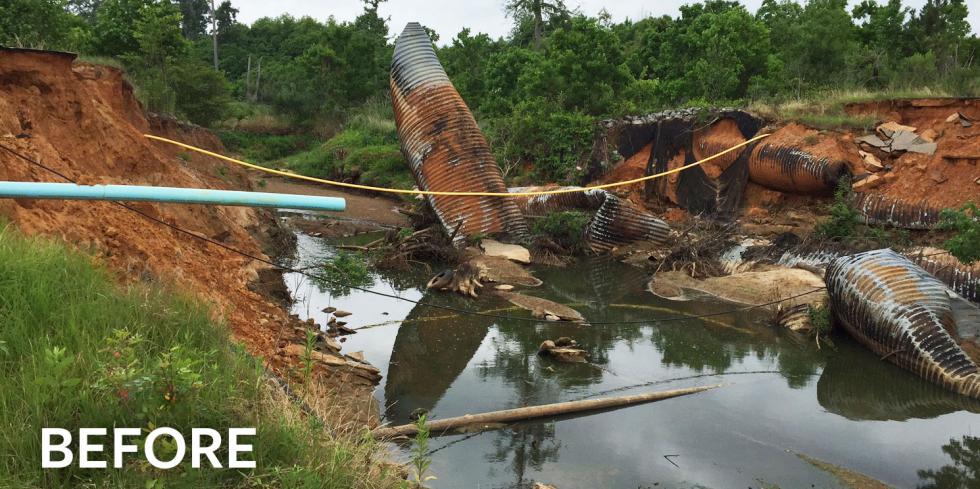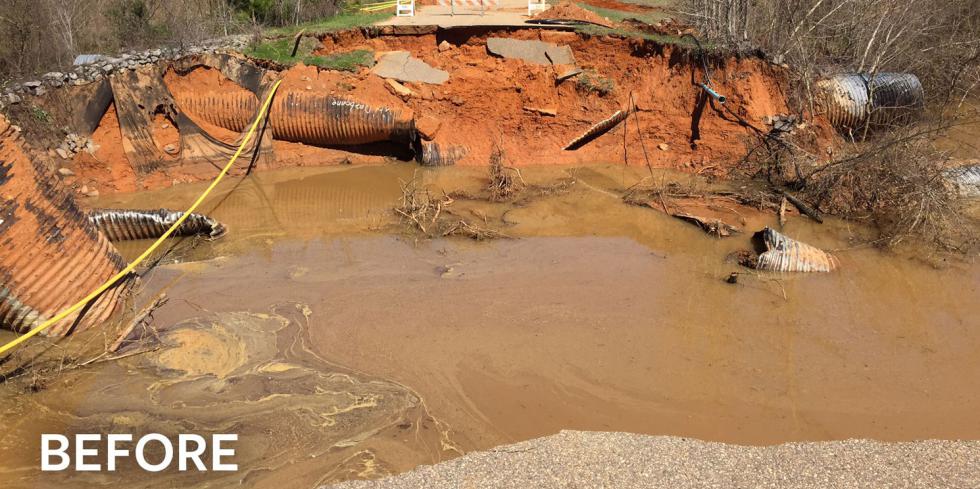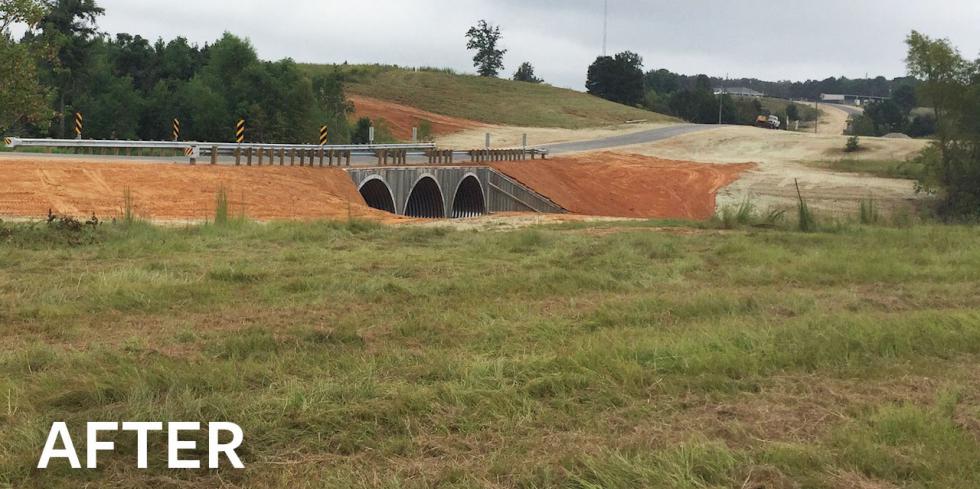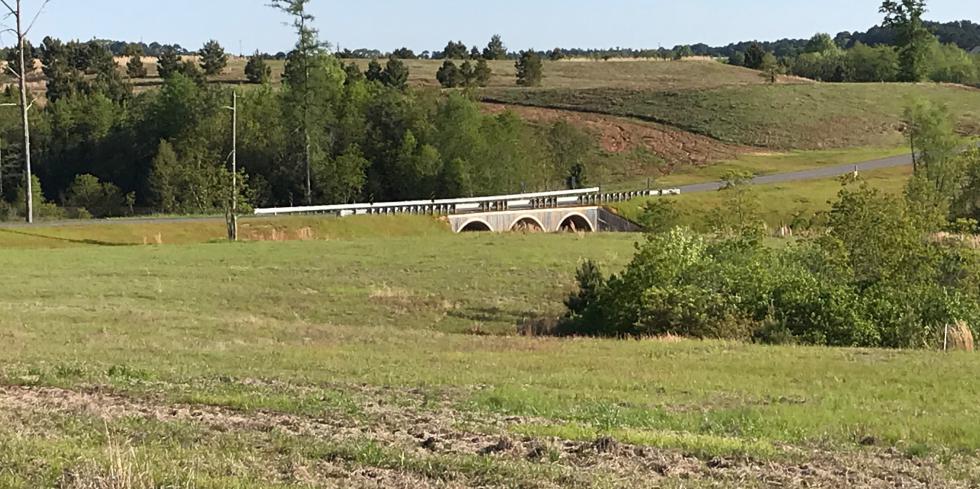The spring floods of March 2016 left the Town of Farmerville with several areas of significant flood damage. Most of the damage occurred on the first day of the flood event including the largest, the Eagle Point Drive culverts that washed out on the night of the storm. A total of 25 areas within the town experienced some level of damage and were identified in an initial assessment. Most of the damage involved roadways or drainage structures. Meyer, Meyer, LaCroix & Hixson, Inc. (MML&H) was selected by the Town of Farmerville on the basis of a request for proposals to identify all of the damage and to work with FEMA and GOHSEP to secure funding and get the damage repaired. Because the detour around the Eagle Point Drive crossing was long and the damage extensive, the replacement of this structure was determined to be a priority for repair once MML&H was selected in late May 2016.
Within the first week, MML&H applied for a permit from the Corps of Engineers to replace the washed-out five-culvert structure and began the process of evaluating the cost to replace the structure exactly as it had been originally constructed, as required under the FEMA PA Program. The cost was determined to be $1.6 million. From there, MML&H developed a project that would serve the same purpose but would also be less expensive and last longer than the original structure. The solution was an aluminum multi-plate structure. MML&H began working on two tracks, 1) designing the selected structure and preparing plans and specifications, and 2) seeking all of the required permits and approvals while still working with FEMA to have the project approved. The plans and specifications were completed in September 2016. In November, FEMA approved and obligated the federal funds for the project. The project was completed in September 2017 at a cost of $936,341. The remaining smaller projects were generally grouped into three large projects. MML&H recommended to rebuild projects in close proximity to each other and of a similar type to lower mobilization costs. For each damaged area, MML&H was tasked with estimating the cost to repair the damaged areas to their pre-storm condition. In some cases, increased culvert size was recommended as a hazard mitigation measure.










